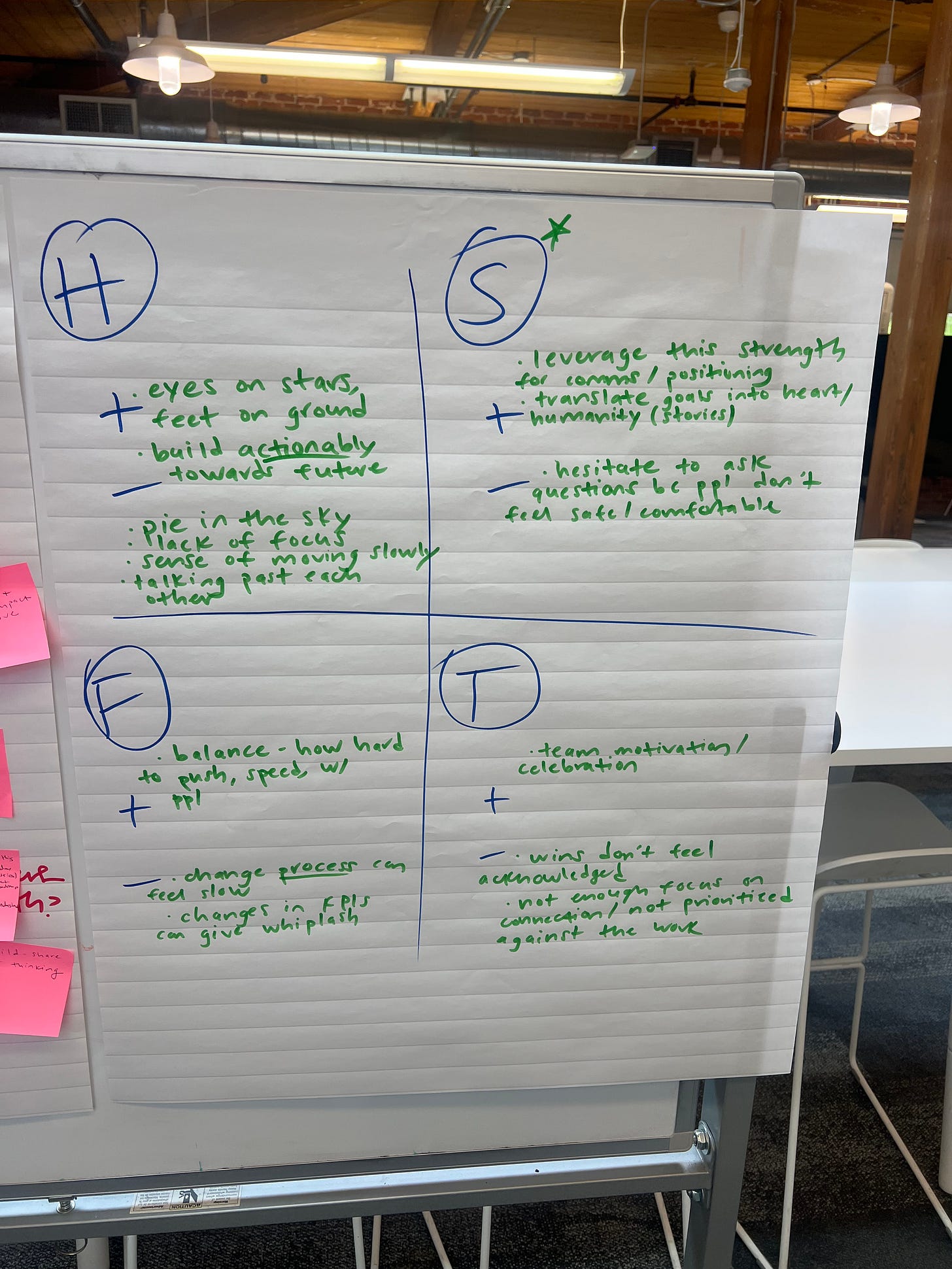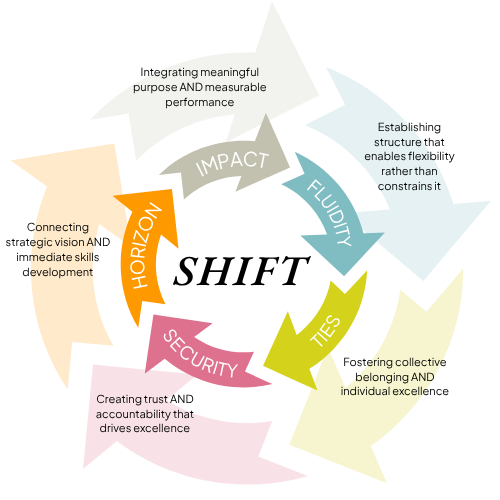When Strategy Fails, Look at the Nervous System
What I’ve learned working with executive teams on the edge
There’s a pattern I see over and over again.
A smart, well-intentioned executive team is facing a mountain of complexity:
Changing workforce expectations
Pressure from the board
Tech disruptions and layoffs
Culture in flux
They’re trying to strategize. Trying to motivate. Trying to hold it together.
But under the surface, everything feels scrambled.
Communication breaks down.
Decisions stall or get made from fear.
And the smartest people in the room feel like they’re constantly behind.
The smartest people in the room aren’t failing.
They’re navigating systems that trigger chronic stress responses: decision fatigue, reactivity, collapse. Most leadership models don’t account for that.That’s why I start from strength.
SHIFT helps leaders recognize how they naturally lead, name what’s getting in the way, and re-regulate, so they can move with clarity, not crisis.
Last week, I worked with over 60 senior leaders at a company facing rapid change, leadership transitions, and widespread fatigue.
We didn’t start with a strategic plan.
We started from strength.
Through a custom SHIFT group engagement, we helped leaders:
Identify how they lead best under pressure
Spot blind spots that were stalling decisions
Build shared language for moving forward with clarity
One leader said simply: “This is something teams can use right now.”
Not theoretical. Not a slide deck. A practical, immediately usable way to understand how they work — and how to move forward.
Here’s the truth:
You can’t lead strategically if your nervous system is in survival mode.
In the same way a body under chronic stress loses access to clear thinking, creativity, and connection — so does an organization.
And most leadership frameworks don’t touch this.
SHIFT does.
The SHIFT Framework helps executive teams move from:
→ Reactivity to regulation
→ Scattered priorities to aligned action
→ Uncertainty to clarity and confidence
We don’t just talk about better leadership.
We build systems that support it — grounded in how humans actually work under pressure.

Here’s what shifted in that room:
✔︎ Leaders saw how their strengths could be leveraged not hidden or diluted
✔︎ The team named what was actually getting in the way of progress
✔︎ They walked out with shared language, practical strategies, and next steps they could own
These aren’t abstract insights. They’re operational.
That’s the difference when you start from strength, not fear.
If you’re seeing the signs (team burnout, missed decisions, urgent reactivity) it’s not too late. But it is time to try a different approach.
I’m opening 2 summer engagements (starting July) for organizations ready to SHIFT how they lead and steady their teams in the process.
You can book a discovery call here or forward this to someone who needs to hear it.
Because the work can’t wait — but it doesn’t have to feel so hard.
With care,
Rachael




